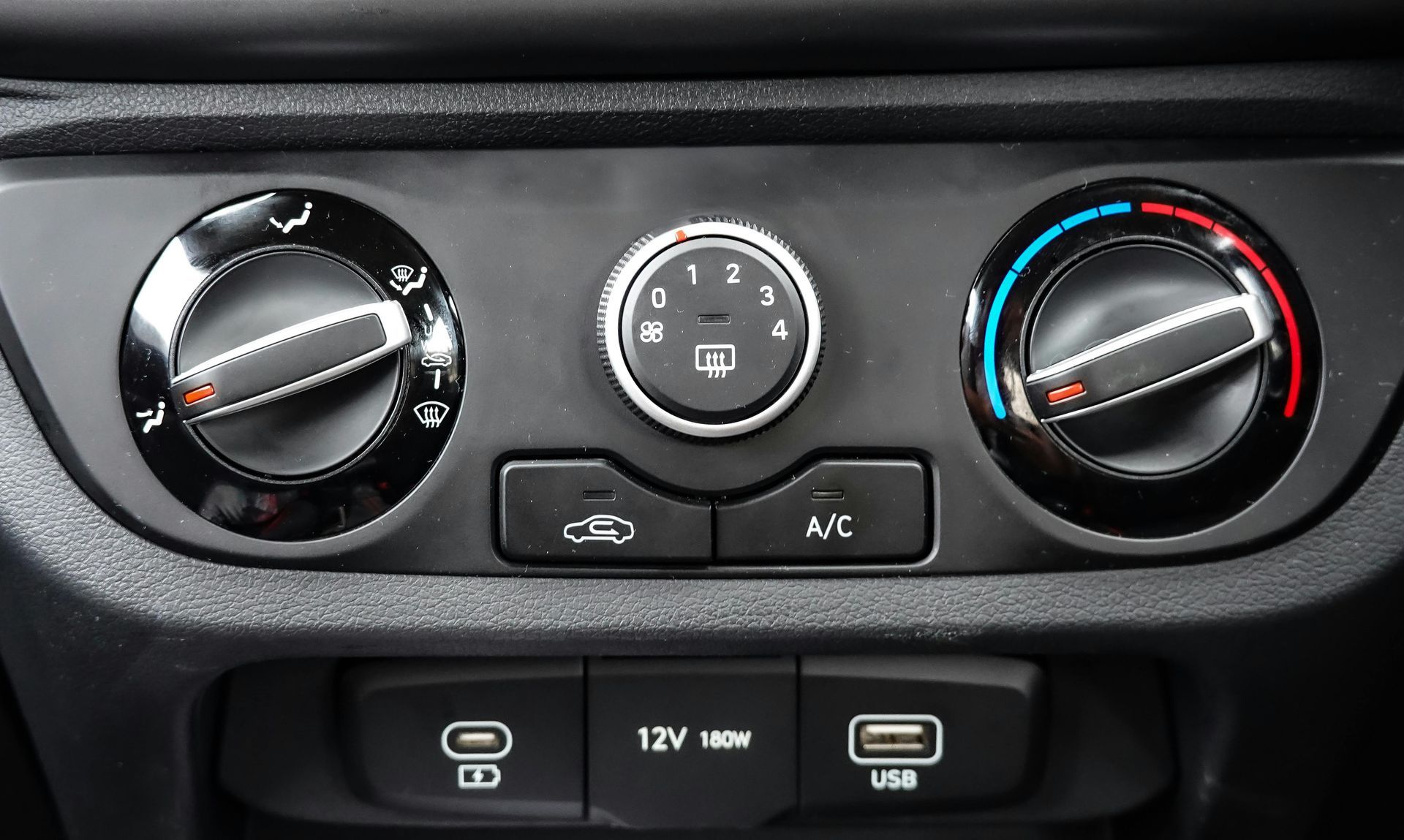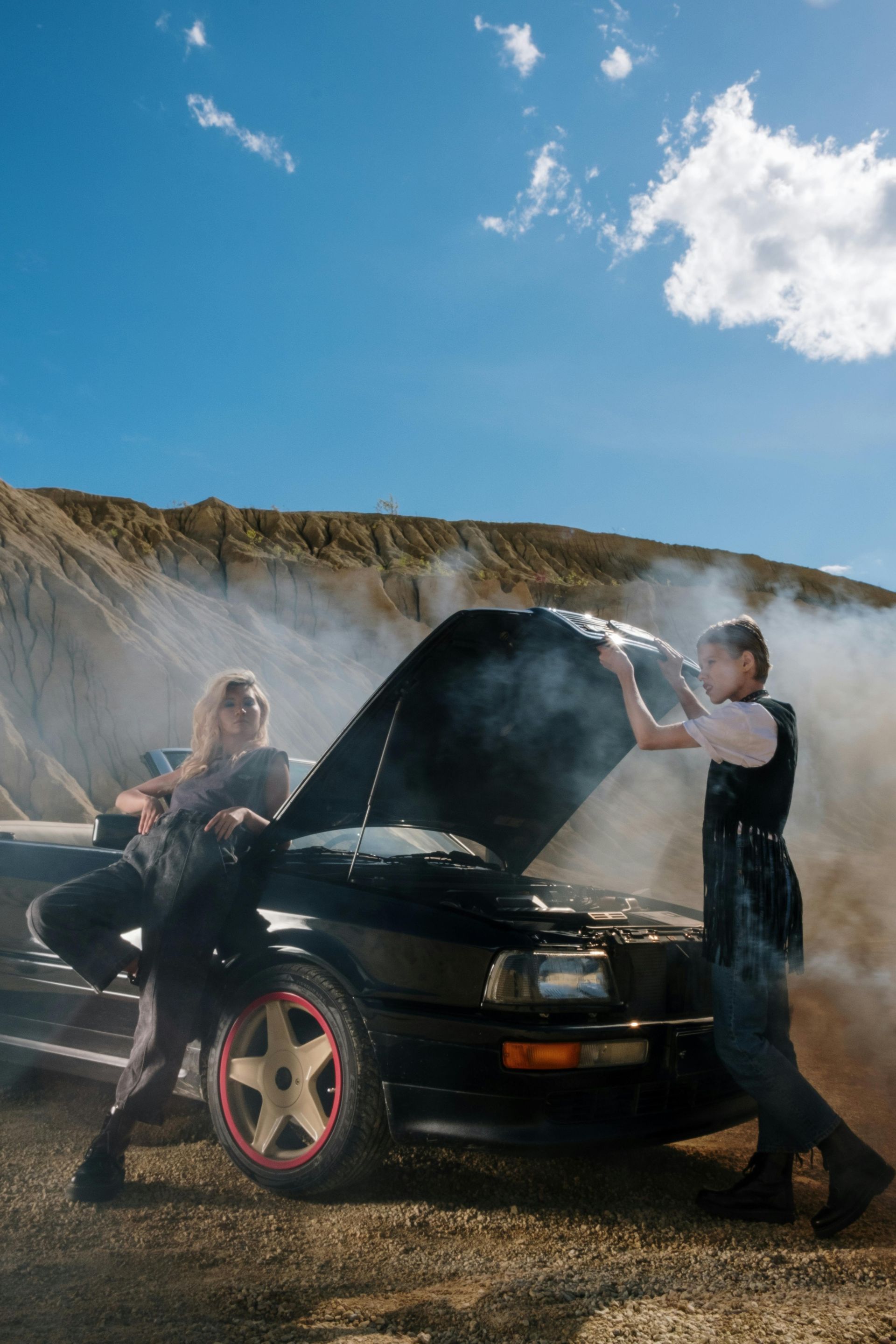Critical Fluid Checks Every Colorado Springs Driver Needs to Know
Your vehicle relies on several vital fluids to keep running smoothly, and Colorado's unique climate makes regular fluid maintenance even more important. From the high altitude of the Pikes Peak region to the temperature swings that can hit 50 degrees in a single day, Colorado Springs drivers face conditions that put extra stress on their vehicle's fluid systems.
Learning to check these fluids yourself can help you catch problems early, save money on repairs, and avoid getting stranded on Highway 24 or I-25. Here's what every Colorado Springs driver should know about their vehicle's essential fluids.
Engine Oil: Your Engine's Lifeline
Engine oil lubricates moving parts and helps regulate temperature. In Colorado's dry climate and varying elevations, checking your oil regularly becomes even more critical.
How to Check: Park on level ground and wait at least 10 minutes after driving. Pull out the dipstick, clean it with a rag, reinsert it fully, then pull it out again. The oil level should be between the minimum and maximum marks.
What to Look For: Fresh oil appears amber or black and flows smoothly. If your oil looks thick, gritty, or has metal particles, it needs changing immediately. Colorado's dusty conditions can contaminate oil faster than in other climates.
When to Change: Most vehicles need oil changes every 3,000 to 7,500 miles, but check your owner's manual. Mountain driving and stop-and-go traffic in Colorado Springs can shorten intervals.
Coolant: Protection Against Temperature Extremes
Colorado's temperature swings make coolant especially important. Your cooling system prevents overheating in summer and freezing in winter, when temperatures in Colorado Springs can drop below zero.
How to Check: Only check coolant when the engine is completely cool. Look at the coolant reservoir tank, usually a translucent container near the radiator. The level should be between the "MIN" and "MAX" lines.
What to Look For: Coolant should be bright green, orange, or pink depending on your vehicle's type. Brown, rusty, or cloudy coolant indicates contamination or old fluid that needs replacement.
Colorado Tip: The high altitude around Colorado Springs can cause coolant to boil at lower temperatures. Make sure your coolant mixture is appropriate for our elevation and climate.
Brake Fluid: Essential for Mountain Safety
With routes like the Manitou Incline and drives up to Woodland Park, Colorado Springs drivers rely heavily on their brakes. Brake fluid is what transfers the pressure from your brake pedal to your brake pads.
How to Check: Locate the brake fluid reservoir, usually a small, clear container on top of the brake master cylinder. The fluid level should be between the minimum and maximum lines.
What to Look For: Fresh brake fluid is clear to light yellow. Dark brown or black fluid needs immediate replacement. Any moisture or debris in the fluid is a red flag.
Warning Signs: If your brake pedal feels spongy or sinks to the floor, you may have a brake fluid leak. This is a serious safety issue that needs immediate professional attention.
Power Steering Fluid: Smooth Handling for All Conditions
Whether you're parking downtown or taking curves on Gold Camp Road, power steering fluid helps you maintain control of your vehicle.
How to Check: With the engine warm and running, remove the power steering reservoir cap. Some vehicles have a dipstick attached to the cap, while others have level markings on the reservoir itself.
What to Look For: Power steering fluid is typically red or clear when new. Dark, thick, or foamy fluid indicates it's time for a change. Unusual noises when turning the wheel often point to low power steering fluid.
Transmission Fluid: Keeping You Moving
Transmission fluid lubricates and cools your transmission components. Colorado's mountain driving puts extra strain on transmissions, making regular checks important.
How to Check: Many newer vehicles don't have a transmission dipstick, requiring professional service. For vehicles that do, check with the engine running and transmission warm, following your owner's manual instructions exactly.
What to Look For: Transmission fluid should be bright red and smell slightly sweet. Brown or black fluid with a burnt smell indicates serious problems that need immediate attention.
Windshield Washer Fluid: Clear Vision in All Weather
Colorado's dry, dusty conditions and winter road salt make windshield washer fluid essential for maintaining visibility.
How to Check: The windshield washer reservoir is usually marked with a windshield symbol. Simply remove the cap and check the fluid level visually.
Colorado Considerations: Use washer fluid rated for sub-zero temperatures. Regular water will freeze in Colorado winters and can damage your washer system. Keep extra fluid in your garage – Colorado conditions can deplete it quickly.
Battery Electrolyte: Power in Extreme Conditions
While many modern batteries are sealed, some still allow you to check electrolyte levels. Colorado's temperature extremes are particularly hard on batteries.
How to Check: Remove the battery caps (if present) and look at the fluid level in each cell. It should cover the internal plates but not overflow.
Safety Note: Battery acid is corrosive. Wear safety glasses and gloves, and never smoke near a battery.
Signs You Need Professional Help
While checking fluids is something most drivers can do, some situations require professional attention:
- Any fluid that's contaminated or the wrong color
- Rapid fluid loss indicating leaks
- Fluid levels that drop quickly after topping off
- Unusual smells or noises related to fluid systems
Seasonal Considerations for Colorado Springs
Summer: Check coolant more frequently during hot weather. Mountain driving can cause overheating.
Winter: Ensure all fluids are rated for freezing temperatures. Cold weather thickens fluids and reduces their effectiveness.
Spring: After winter, check for leaks that may have developed from freeze-thaw cycles.
Fall: Prepare for temperature drops by ensuring all fluids are topped off and in good condition.
Professional Fluid Service in Colorado Springs
Regular fluid checks are important, but professional service ensures your vehicle's systems work properly together. At Action Automotive Service, our experienced technicians can perform comprehensive fluid services, from routine oil changes to complete transmission fluid replacement.
We use only manufacturer-quality parts and fluids designed to handle Colorado's challenging conditions. Whether you need a simple oil change or suspect a fluid leak, our team can diagnose and fix the problem quickly.
Don't let fluid problems leave you stranded in Colorado Springs. Call Action Automotive Service at (719) 633-0008 or book online today. We're conveniently located at 3335 Fillmore Ridge Heights and proud to offer 10% military discounts to our service members.












